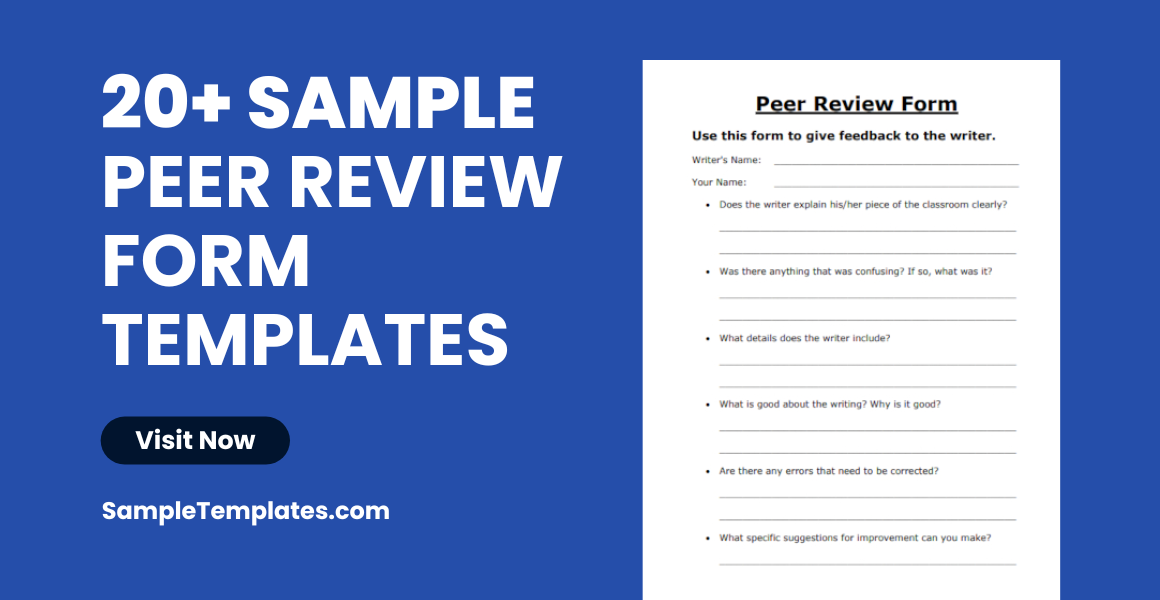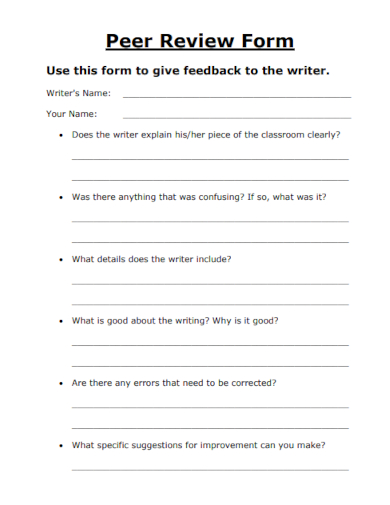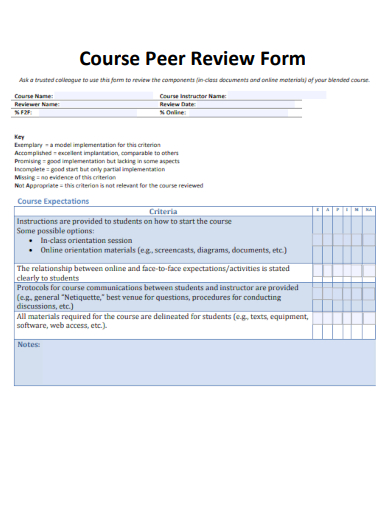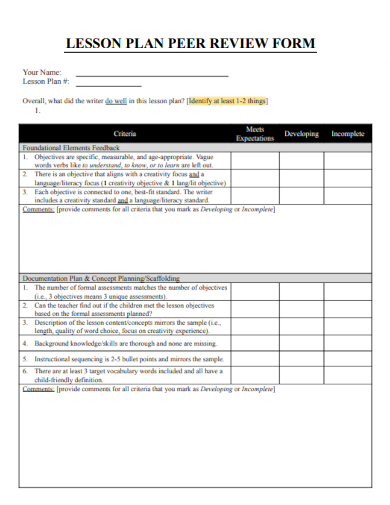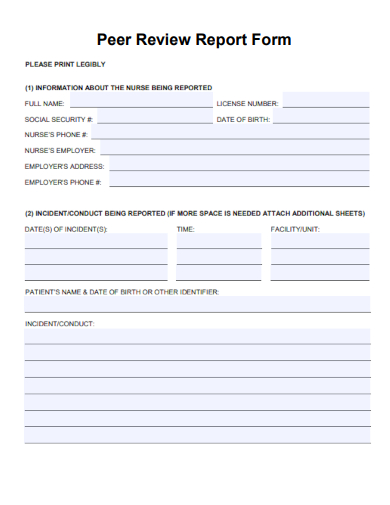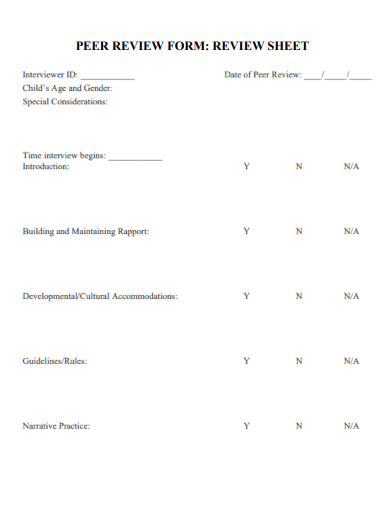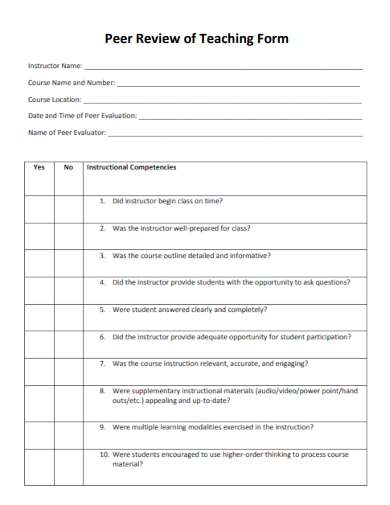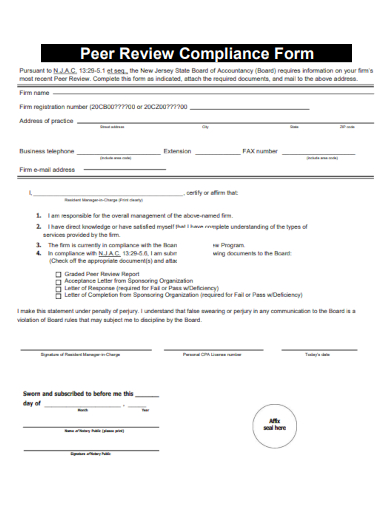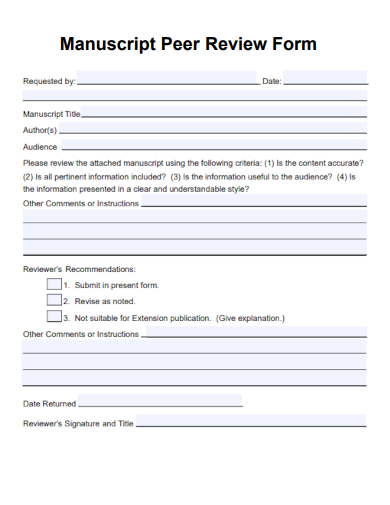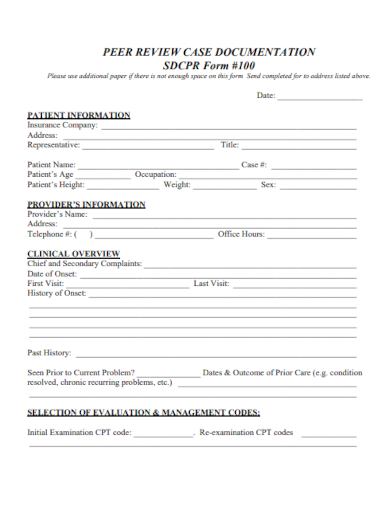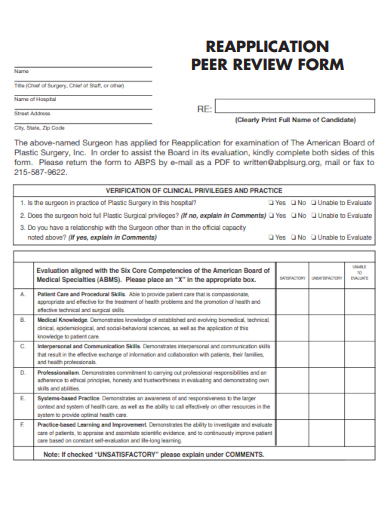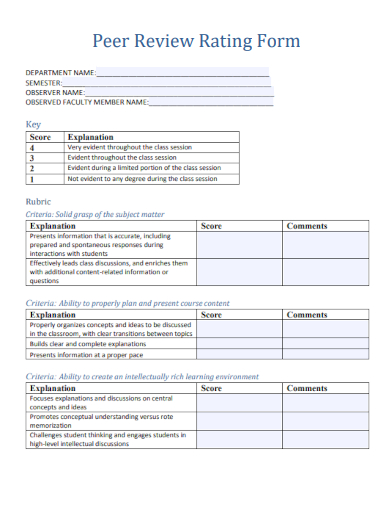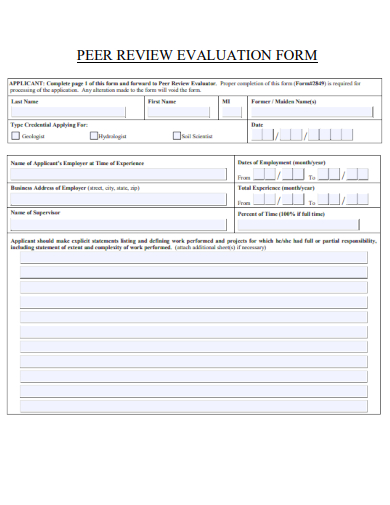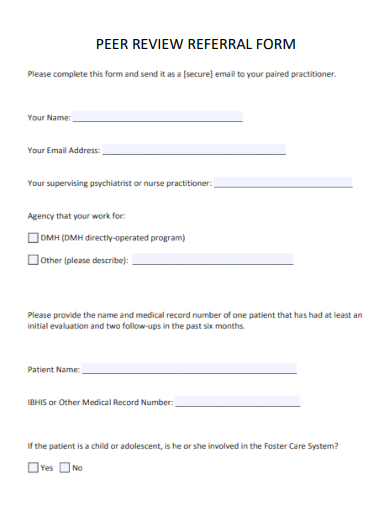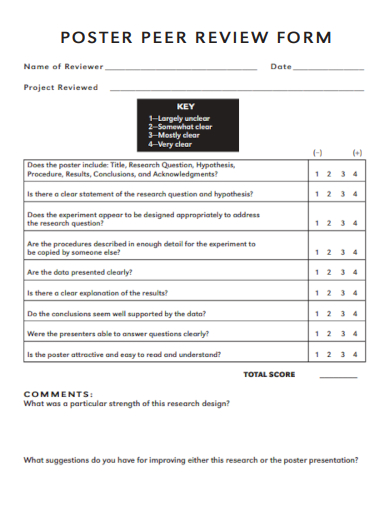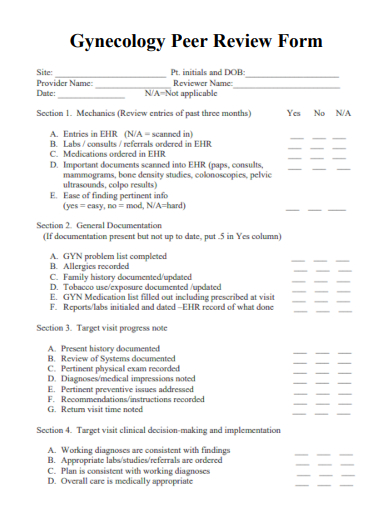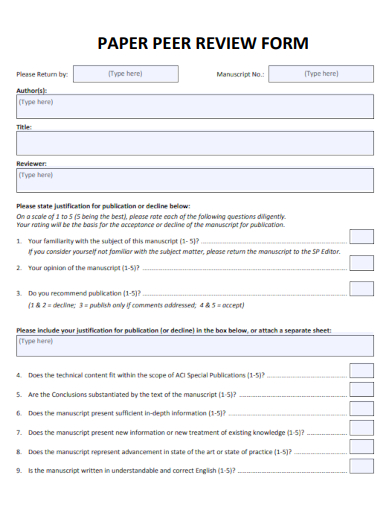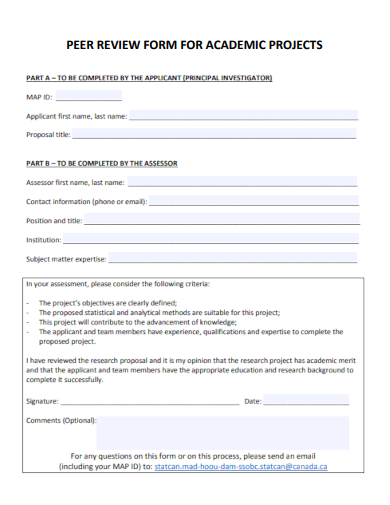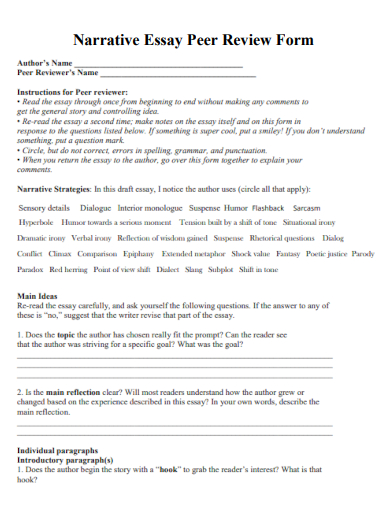Elevate your evaluation process with our comprehensive Sample Peer Review Form Template. Ideal for academic, professional, or personal use, this customizable template streamlines the feedback loop, ensuring detailed and constructive assessments. Infused with intuitive design and clear, concise questions, it’s the quintessential tool for fostering growth and excellence in any collaborative environment. Enhance your peer reviews and empower your team with our user-friendly, highly effective form. Download now and transform your review process into a powerhouse of productivity and insightful critique.
FREE 20+ Peer Review Form Samples
1. Peer Review Form Template
2. Peer Review Feedback Form Template
3. Course Peer Review Form Template
4. Lesson Plan Peer Review Form Template
5. Peer Review Report Form Template
6. Peer Review Sheet Form Template
What is a peer review form?
A peer review form is an essential tool used primarily in academic and professional settings to evaluate the performance, quality, or output of individuals by their colleagues, also known as their peers. The process is fundamental in upholding the standards of excellence and continuous improvement within various fields, including but not limited to, scholarly publishing, education, healthcare, and research.
In academic publishing, peer review forms are used by referees to assess the rigor, validity, and originality of manuscripts submitted for publication in journals or conferences. This critical evaluation ensures that only work that meets the discipline’s standards and contributes meaningfully to the field is disseminated to the public.
In educational contexts, peer review forms are implemented for a range of activities from evaluating group work to critiquing presentations. They enable students to provide each other with valuable feedback on performance and understanding, fostering a collaborative learning environment. Educators often use these forms to encourage students to engage thoughtfully with the work of their peers and to reflect on their own contributions.
Within the professional sphere, peer review forms can be a part of performance appraisals. Employees benefit from receiving constructive feedback from colleagues who understand their work context and challenges. This process promotes a culture of transparency, support, and mutual respect, as feedback is not solely top-down from management.
A well-crafted peer review form generally contains several key elements:
Criteria for Evaluation: The form will list specific criteria that the reviewer should consider. These might include understanding of subject matter, quality of work, creativity, engagement, teamwork, communication skills, or professionalism.
Rating Scale: A numeric or descriptive scale enables the reviewer to rate the peer’s performance against each criterion. This could range from poor to excellent, or from strongly disagree to strongly agree.
Open-Ended Questions: To garner more nuanced insights, forms often include sections for written comments, allowing reviewers to provide detailed feedback and suggestions for improvement.
Reviewer Anonymity: To ensure honest feedback, peer review is often conducted anonymously. This encourages frank commentary without fear of repercussions.
Guidelines for Constructive Feedback: Effective forms often include instructions or prompts on how to give constructive, respectful, and helpful feedback.
Summary Section: Reviewers might be asked to provide an overall summary of their impressions, which can be particularly useful for synthesizing comments and providing a general overview of the peer’s performance.
The peer review form serves several important purposes. It acts as a quality control mechanism, ensuring that work meets the standards set by a particular community or profession. It also functions as a developmental tool, offering individuals insights into their strengths and areas for growth based on their peers’ perspectives. Furthermore, the process of completing a peer review can be educational for the reviewer as well, as it requires critical thinking and a deep engagement with the content or performance being reviewed.
The effectiveness of a peer review form lies in its ability to foster a reflective and constructive exchange. When used properly, it can lead to significant improvements in performance, collaboration, and the quality of work produced, ultimately benefiting the collective endeavor of a group or institution.
7. Peer Review of Teaching Form Template
8. Peer Review Compliance Form Template
10. Manuscript Peer Review Form Template
11. Peer Review Case Documentation Form Template
12. Reapplication Peer Review Form Template
13. Peer Review Rating Form Template
14. Peer Review Form for Student Template
How do you write a peer review form?
Writing a peer review form involves careful consideration of several components to ensure it effectively elicits constructive feedback and actionable insights. Here’s a step-by-step guide on how to create a well-structured peer review form:
1. Determine the Purpose:
Start by identifying what you want to accomplish with the peer review. Is it for academic purposes, professional development, or manuscript evaluation? The purpose will dictate the content and tone of the questions.
2. Choose the Evaluation Criteria:
Select criteria relevant to the work being reviewed. This could include:
- Quality of Work: Accuracy, thoroughness, and attention to detail.
- Knowledge and Skills: Proficiency in the necessary skills and understanding of the subject matter.
- Collaboration and Teamwork: Ability to work with others, contribute to team goals, and handle conflicts.
- Communication: Clarity and effectiveness in written and oral communication.
- Creativity and Innovation: Originality of ideas and problem-solving capabilities.
- Dependability: Consistency in performance and reliability in completing tasks.
3. Develop a Rating Scale:
Create a scale that allows reviewers to rate each criterion. Common scales include numerical ranges (e.g., 1-5), descriptive terms (e.g., Poor, Fair, Good, Excellent), or frequency (e.g., Always, Often, Sometimes, Never).
4. Include Qualitative Sections:
Provide sections for written comments to supplement the quantitative ratings. Open-ended questions and comment boxes invite reviewers to give specific examples that justify their ratings.
5. Maintain Anonymity:
Design the form so that reviews can be anonymous, if appropriate. Anonymity can encourage honest, unbiased feedback.
6. Give Instructions for Constructive Feedback:
Include guidelines at the beginning of the form on how to give constructive criticism. Encourage reviewers to be specific, objective, and respectful.
7. Draft the Form:
Organize the content logically, starting with general information about the reviewer and the reviewee, followed by the evaluation criteria, rating scales, and qualitative questions. Make sure the form is clear and concise.
8. Pilot the Form:
Before full implementation, test the form with a small group to see if it’s understandable and captures the necessary information. Adjust based on the feedback.
9. Ensure Usability:
The form should be easy to fill out, whether it’s on paper or online. If it’s a digital form, ensure it’s compatible with different devices and browsers.
10. Review and Revise:
Once the form has been in use, periodically review it to make sure it continues to meet the needs of the reviewers and the goals of the peer review process. Adjust as necessary.
A good peer review form balances objective criteria with the opportunity for subjective, thoughtful feedback. It is a tool not just for evaluation, but for growth and development. The process of creating the form should be as collaborative as the feedback it aims to facilitate, often involving input from various stakeholders to ensure it serves its intended purpose effectively.
15. Peer Review Evaluation Form Template
16. Peer Review Referral Form Template
17. Poster Peer Review Form Template
18. Gynecology Peer Review Form Template
19. Paper Peer Review Form Template
20. Peer Review Form for Academic Projects Template
21. Narrative Essay Peer Review Form Template
What is the difference between peer review and peer evaluation?
Peer review and peer evaluation are closely related concepts that are often used interchangeably, but they serve different purposes and follow distinct processes within educational and professional contexts. Understanding the nuances between them can enhance the effectiveness of both methods in collaborative environments.
Peer Review:
Peer review is a method commonly used to assess the quality of work typically within academic or professional literature, research, or projects. It is a systematic process where colleagues with similar competencies and expertise evaluate the merit, validity, and significance of one’s work. The primary focus of peer review is to ensure the standards of quality and to provide credibility to the work or research before it is published or presented to a broader audience.
Key characteristics of peer review include:
- Quality Control: It acts as a filter to ensure that only high-quality material is published or recognized.
- Anonymity: Often, peer reviews are conducted blind, with the reviewer’s and sometimes the author’s identities concealed.
- Feedback: It provides authors with feedback to improve their work before it goes public.
- Professional Development: Through reviewing others’ work, professionals can stay abreast of recent developments in their field and improve their critical thinking and evaluation skills.
Peer Evaluation:
Peer evaluation, on the other hand, is often more focused on assessing the performance or contributions of individuals within a team or group setting. This can take place in academic settings, such as group projects or class participation, or in the workplace, as part of performance reviews. The primary goal here is to provide feedback on an individual’s performance from the perspective of their equals, rather than from a supervisor or higher authority.
Key characteristics of peer evaluation include:
- Performance Assessment: It involves assessing the contributions and performance of peers against a set of predefined criteria.
- Developmental: The aim is often to identify strengths and areas for improvement to aid in personal or professional development.
- Transparency: Peer evaluation can encourage openness and transparency within a team, as members assess each other.
- Motivational: It can motivate individuals to perform better, knowing that their peers will evaluate their contributions.
Differences:
While both processes involve peers assessing each other’s work or performance, peer review is typically a more formal, structured process used for scholarly work or research that has implications for professional standing or knowledge in the field. Peer evaluation is often more informal and continuous, used for personal or professional development within the context of a working group or team dynamics.
Another key difference lies in the area of focus: peer review evaluates the work or output itself, often without considering the personal attributes of the creator, while peer evaluation is more holistic, taking into account the individual’s skills, contributions, and behaviors within a group.
In summary, peer review serves as a gatekeeping function for quality and credibility in professional and academic fields, while peer evaluation is a tool for personal or group development, providing feedback on individual performance. Both methods, when used appropriately, can enhance accountability, drive quality improvements, and foster a culture of excellence and mutual respect.
Related Posts
Sample Sworn Affidavit Forms
Vehicle Inspection Forms Samples & Templates
Sample Employee Advance Forms
Sample Child Travel Consent Forms
Sample Testimonial Request Forms
Sample Employee Details Forms
Sample Divorce Forms
Sample Attestation Forms
Employee Performance Appraisal Form Templates
FREE 9+ Sample Presentation Evaluation Forms in MS Word
FREE 10+ School Admission Form Samples & Templates in MS Word | PDF
FREE 30+ Patient Consent Form Samples in PDF | MS Word
FREE 10+ Sample Sign Off Form Templates in PDF | MS Word
FREE 11+ Sample Medical Consultation Forms in PDF | MS Word
FREE 8+ Sample Donation Forms in PDF | MS Word
